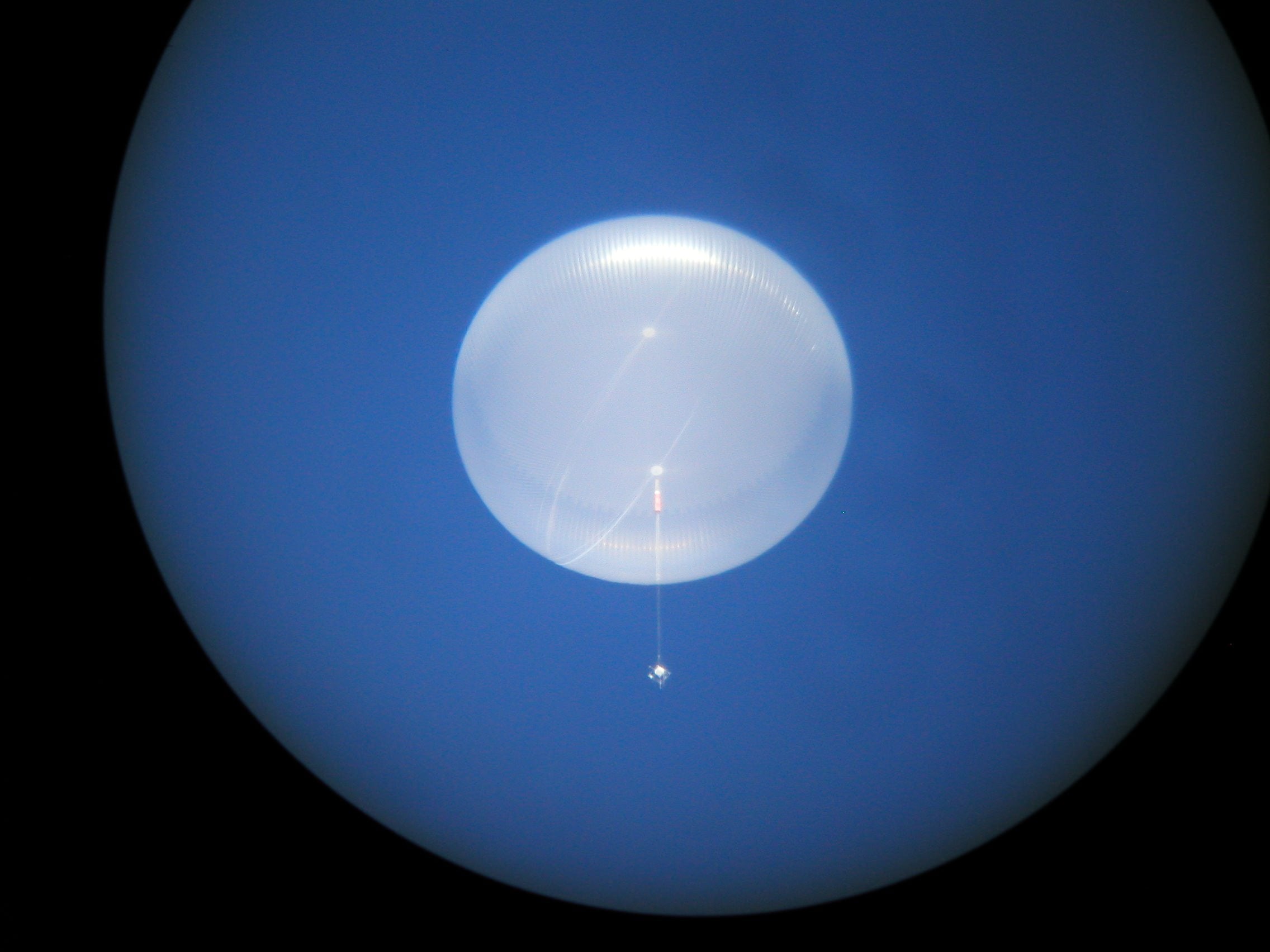[/caption] High altitude balloons are an inexpensive means of getting payloads to the brink of space, where all sorts of great science and astronomy can be done. A new prototype of balloon that uses material as thin as plastic food wrap was successfully checked out in an 11-day test flight, and this new design may usher in a new era of high altitude flight. NASA and the National Science Foundation sponsored the test, which was launched from McMurdo Station in Antarctica. The balloon reached a float altitude of more than 111,000 feet and maintained it for the entire 11 days of flight. It's hoped that the super-pressure balloon ultimately will carry large scientific experiments to the edge of space for 100 days or more.
The flight tested the durability and functionality of the scientific balloon's novel globe-shaped design and the unique lightweight and thin polyethylene film. It launched on December 28, 2008 and returned on January 8, 2009.
"Our balloon development team is very proud of the tremendous success of the test flight and is focused on continued development of this new capability to fly balloons for months at a time in support of scientific investigations," said David Pierce, chief of the Balloon Program Office at NASA's Wallops Flight Facility at Wallops Island, Va. "The test flight has demonstrated that 100 day flights of large, heavy payloads is a realistic goal."
This seven-million-cubic-foot super-pressure balloon is the largest single-cell, super-pressure, fully-sealed balloon ever flown. When development concludes, NASA will have a 22 million-cubic-foot balloon that can carry a one-ton instrument to an altitude of more than 110,000 feet, which is three to four times higher than passenger planes fly. Ultra-long duration missions using the super pressure balloon cost considerably less than a satellite and the scientific instruments flown can be retrieved and launched again, making them ideal very-high altitude research platforms.
[caption id="attachment_23453" align="aligncenter" width="580" caption="CREAM team. Credit: CREAM"]
[/caption] In addition to the super pressure test flight, two additional long-duration balloons were launched from McMurdo during the 2008-2009 campaign. The University of Maryland's Cosmic Ray Energetics and Mass, or CREAM IV, experiment launched December 19, 2008, and landed January 6, 2009. The CREAM investigation was used to directly measure high energy cosmic-ray particles arriving at Earth after originating from distant supernova explosions elsewhere in the Milky Way galaxy. The payload for this experiment was refurbished from an earlier flight.
The team released data and their findings from their first flight in August 2008.
The University of Hawaii Manoa's Antarctic Impulsive Transient Antenna launched December 21, 2008, and is still aloft. Its radio telescope is searching for indirect evidence of extremely high-energy neutrino particles possibly coming from outside our Milky Way galaxy.
Source:
NASA
 Universe Today
Universe Today
